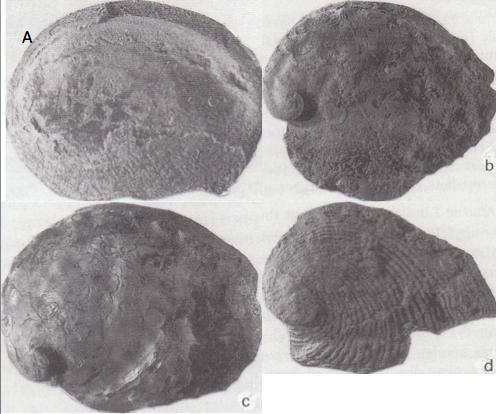Overview
Description
Distribution
Life History & Behaviour
Feeding Experiment
Cyclicity
Evolution & Systematics
Fossil History
Morphology and Physiology
External Morphology
Wikipedia
References & More Information
Bibliographies | Fossil History
| Even though Haliotis has a hard shell its fossil record is not extensive. This is thought to be because they tend to inhabit the high energy coastal zone where there are many shell degradation processes at work (Lindberg 1989). Haliotis first occurred in the Cretaceous period in California (Anderson 1902). This fossil is morphologically similar to today’s New Zealand abalone and does not represent an evolutionary step (Lindberg 1989). There are other Cretaceous species that were found in Europe but the validity of these fossils are questioned and many researchers now think that they are fragments of much large fossils of unrelated species (Lindberg 1989). There is then a very poor fossil record from the end of the Cretaceous until the Miocene where haliotids suddenly have a global distribution. Fossils from this time period have been found in Australia, New Zealand, North America and Japan (Lindberg 1989). |
|

Figure 1: four abalone fossils. A: Haliotis lomaensis from the cretaceous. B: Haliotis palaea Miocene. C: Haliotis assimilis Pliocene. D: Haliotis pourtalesi Pliocene. Adapted from Lindberg (1989)
|
|
|
|